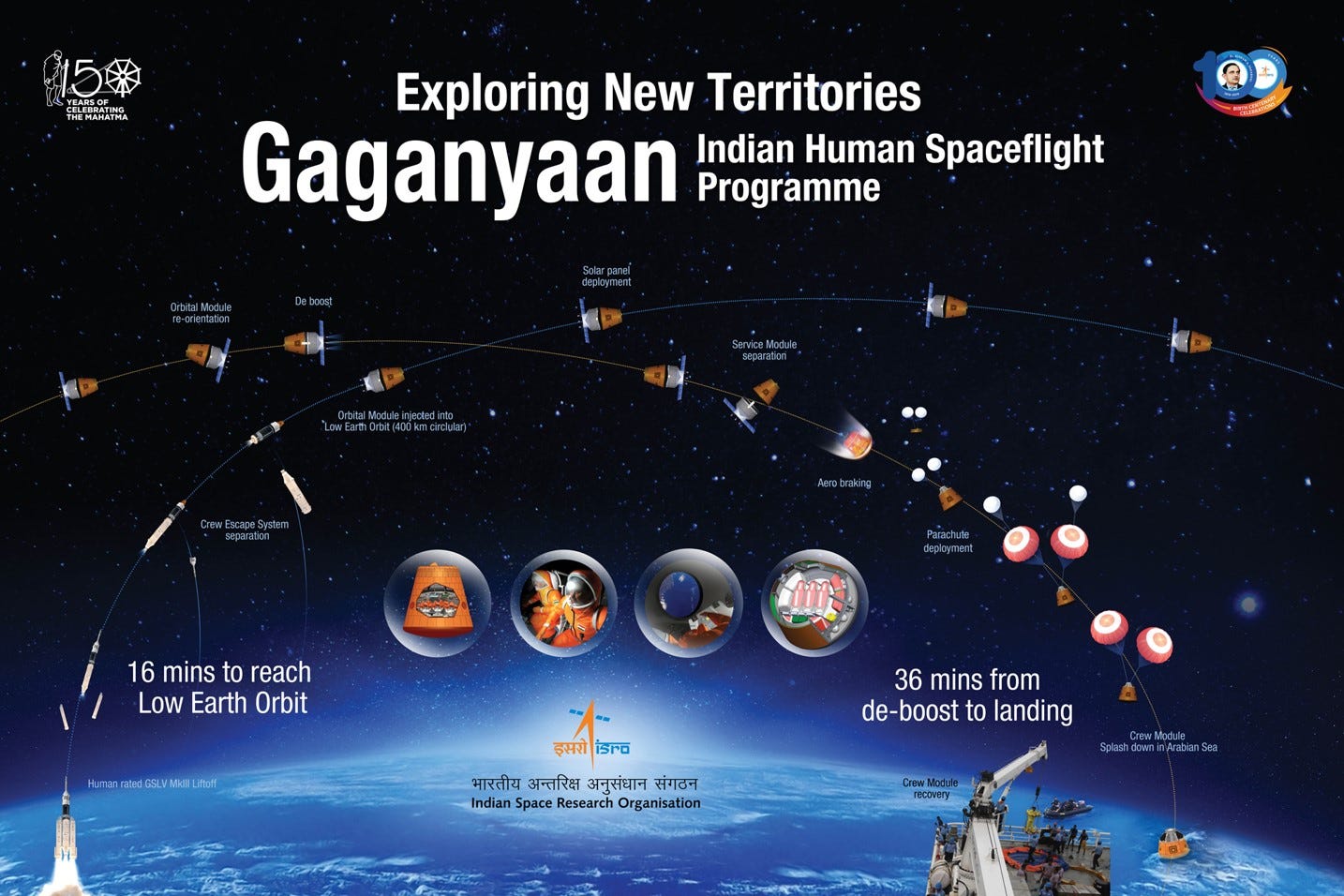Antariksham Weekly #07
Aditya-L1 Mission's Support Centre is fixed, French Minister visited ISRO and HSFC, Gaganyaan Updates and Newspace India Podcast
Official News
Novel technique for tracking solar eruptions that disrupt space weather to be used in India's first solar mission
Have you watched a sci-fi movie or TV series where communications are disrupted because of the Solar Flares? While the idea is correct, the term used is often wrong. Solar flares are fundamentally different from Coronal Mass Ejections (CMEs). These ejections from the sun pose severe threats to our satellites. We need to continuously observe the sun and learn about these ejections as early as possible.
India's first solar mission, Aditya-L1, would be doing precisely that along with other solar science. Scientists at the Aryabhatta Research Institute of observational sciences (ARIES), Nainital, have developed an algorithm to track CMEs, increasing the accuracy of forecasting their estimated arrival time (ETA). The algorithm called CMEs Identification in Inner Solar Corona (CIISCO) would detect and track the accelerating solar eruption in the lower corona. It has already been tested on various Earth-based solar observation data and would now be implemented on the Aditya-L1 mission data.
French Minister has visited ISRO Headquarters and HSFC on April 15, 2021
HE Jean-Yves Le Drian, Minister for Europe & Foreign Affairs, Government of the Republic of France, visited ISRO Headquarters & Human Space Flight Centre. An Agreement between ISRO's Human Space Flight Centre (HSFC) and the French National Space Agency (CNES) for cooperation concerning the Human Spaceflight programme, specifically on sharing expertise in space medicine, was signed during this visit.
Upcoming Missions
Aditya-L1 Mission
The Aditya-L1 mission, planned to be launched later this year, got a ground support centre to monitor and coordinate its various payloads. It will carry seven payloads that multiple institutions across the country have developed.
The ARIES facility near Haldwani will be managed by four to five personnel. An agreement was signed to this effect based on the proposal submitted by the ARIES team, led by Dipankar Banerjee, Director of ARIES, who is a solar physicist and co-chair of the science working group of the Aditya-L1 mission. The same team is also responsible for the CIISCO algorithm.
The centre will attempt to increase international reach through guest participants for collaborations on solar science with the Aditya-L1 mission data. As the article suggests:
The Aditya-L1 Support Centre (ASC) will provide training through regular workshops for the guest users. Apart from this, it will provide ready-to-use Python and Java apps for the satellite data and demos and handouts to facilitate the guest users. An ARIES team has recently developed an algorithm to study the accelerating solar eruptions in the lower corona called CMEs Identification in Inner Solar Corona (in short, CIISCO), where CME stands for coronal mass ejection. Prof. Banerjee explains how this will be put to use: "The centre will also provide source code for advanced data analysis. For example, it will provide the source code for CIISCO that we have developed in ARIES to detect accelerating CMEs in the solar atmosphere."
Gaganyaan
The Gaganyaan Advisory Council (GAC) met recently. They unanimously advised ISRO not to delay the first uncrewed mission. The Indian Data Relay Satellite System (IDRSS) is required for Gaganyaan. This satellite will be responsible for establishing 24 X 7 communication with the astronauts. But there is a possibility that the relay communication satellite may not ready by the end of the year. The council has advised the agency to use another satellite by collaborating with another agency. Most likely, it could be NASA's TDRSS satellite. Also, the four astronaut-elects return from Russia and would be starting training in India soon.
Solid motor testing is planned before the first uncrewed mission, and cryo stage testing is going on. GSLV will be mostly human-rated— the ergonomic characteristics and so on — but it will be fully ready before the crewed mission.
GSLV F10/EOS-3 (aka GISAT-1)
The launch shifted to May 15 due to power problems on the satellite. The spacecraft launch has been pushed back from March 2020.
Agnibaan Launch Vehicle | Agnikul
IIIT-Delhi is developing an algorithm to predict collision from space debris.
The project titled 'Orbit computation of Resident Space Object for Space Situational Awareness' has to be completed in two years. The project will be led by the Indraprastha Institute of Information Technology (IIIT-Delhi) faculty Sanat K Biswas and Arun Balaji Buduru.
Podcasts and Webinars
Evolution of solid propellants for rocketry in India | Newspace India
Rajaram Nagappa talks about how solid propellants were developed in India from the time of the sounding rockets to the larger SLV/PSLV rockets.
Metallurgical failure analysis of aerospace components: Musings of a Metallurgist
A detailed talk on the recent free-space QKD experiment
SAC conducted a detailed talk on the recent QKD experiment on the occasion of World Quantum Day. Thanks to u/ohsin for the presentation slides and for mentioning the key takeaways.
Some takeaways are:
Another ~300-meter free-space Quantum Key Distribution (QKD) trial by June 2021 on a moving platform.
Looking to fly a technology demonstration payload on PS4OP this year.
Might fly a demonstration payload on first Gaganyaan uncrewed flight (Dec 2021)
Aiming for Satellite-Based Quantum communication readiness by 2023
Phase-1 work is under progress for Quantum Radar!
The optical communication demo payload (OCT) on GSAT-29 is yet to be operational, facing difficulties in optical tracking, among others. @36min45sec in audio.
Other Updates and News
Bhuvan portal website got updated.
Participate in the Space Science Challenge by Spacenova.
Sorry for no newsletter last week. I have covered the updates for the last two weeks.






